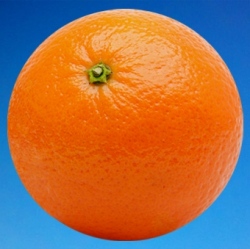
Later this month, Cambridge Consultants will demonstrate its fruit sorting robot at the AgriTechnica show. During the demonstration, fruit will be stacked randomly in a bowl. The robot will use smart software to identify the piece on top. It will translate that information into real-world coordinates and position its end effector to pick up the fruit.
The end effector will adapt to the shape and texture of each object and grip it without damaging it. The robot will work through the bowl, sorting by type or color. The demonstration is significant for two reasons. First, the tasks the robot is being asked to perform aren’t rigidly defined. Instead the robot needs to identify and adapt to a complex situation involving several variables.
One of the biggest challenges with general robotics has been the inability to cope with natural variations in objects. In an auto production line, for example, robots can move heavy objects from one place to another and weld them with precision. But those same robots would be unable to cope if a door frame were slightly misshapen or out of position. If something goes wrong during assembly managers have to stop the line and reset. If the objects being manipulated change the robots need to be reprogrammed or reconfigured, an expensive and time-intensive process.
With few exceptions, this is how industrial automation has worked for the last fifty years. But futurists have long believed that industrial robots will one day be able to work around people, cope with irregular items, and adapt to a changing environment. That’s why sorting different kinds of fruit is an appealing challenge, one requiring object recognition and task planning.
"Our world-class industrial sensing and control team has combined high-powered image-processing algorithms with low-cost sensors and commodity hardware to allow ‘soft’ control of robots when the task is not rigidly defined," says Chris Roberts, head of industrial robotics at Cambridge Consultants. "The system is capable of handling objects for which no detailed computer-aided design model exists."
The "low-cost" aspect of the design is the other significant breakthrough. Cambridge Consultants is a design firm and not in the business of creating new products. For their demonstration robot, the firm’s engineers used inexpensive sensors that are readily available and already in use in industry. In other words, to make its robot, the team didn’t need to invent any new technology. It was just a matter of deploying existing solutions intelligently and strategically.
"Existing solutions tend to be expensive installations," Roberts tells me on a recent phone call. "We’re trying to show that by using relatively cheap hardware and sensors, along with lots of clever image processing software, we can achieve good outcomes." Roberts believes that much of the technology that will transform industrial automation in the near future is already here and waiting to be deployed.
"We see a disconnect with industry," he says. "We see lots of ideas like this in universities. There will be a lab demo showing that this sort of thing is possible, but what’s missing is the industrialization of it. Taking something that works in a lab and bringing it to an industrial setting."
But that technology migration is underway, and it will change the way products are manufactured and delivered.
